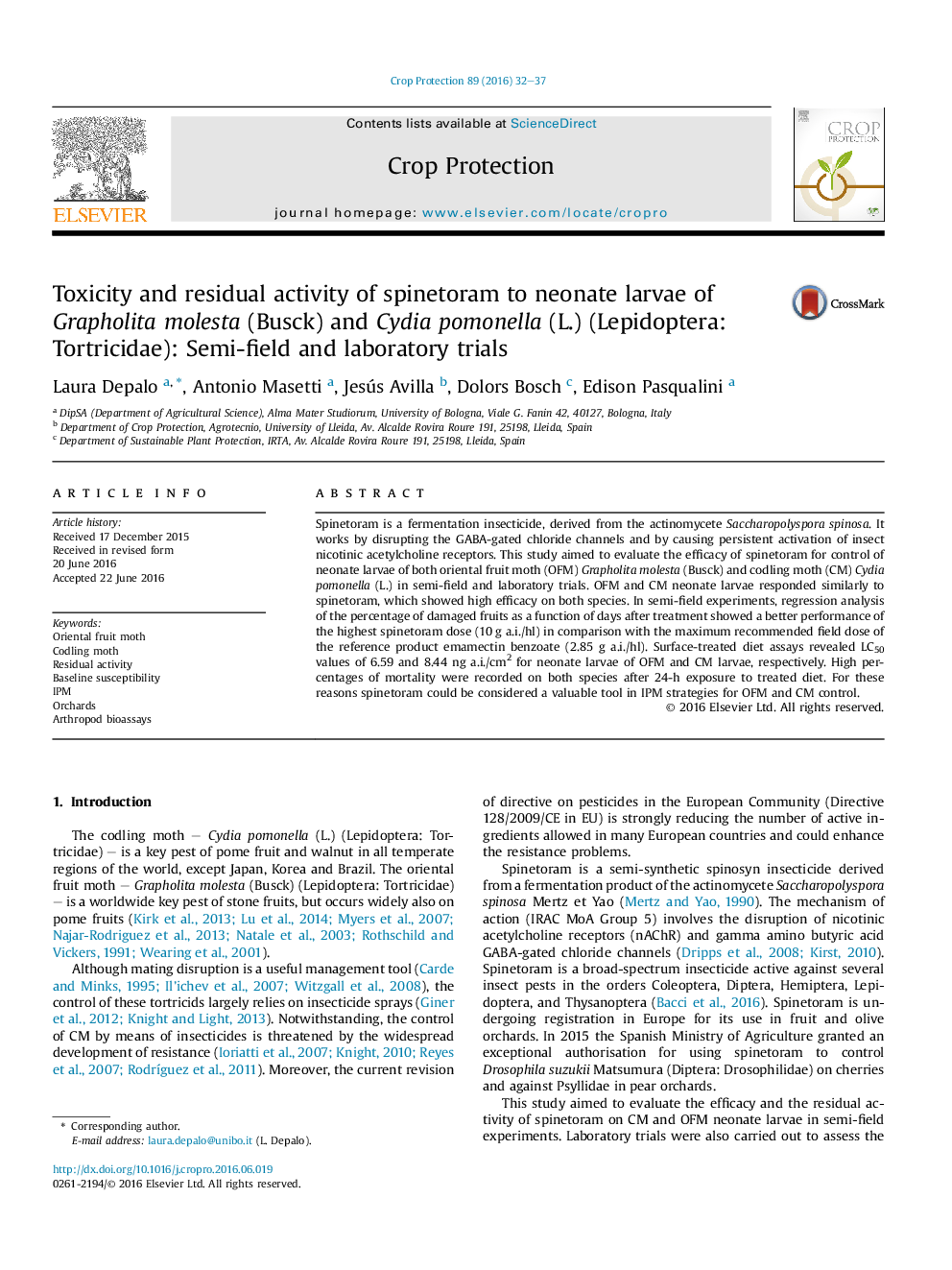| Article ID | Journal | Published Year | Pages | File Type |
|---|---|---|---|---|
| 6373139 | Crop Protection | 2016 | 6 Pages |
Abstract
Spinetoram is a fermentation insecticide, derived from the actinomycete Saccharopolyspora spinosa. It works by disrupting the GABA-gated chloride channels and by causing persistent activation of insect nicotinic acetylcholine receptors. This study aimed to evaluate the efficacy of spinetoram for control of neonate larvae of both oriental fruit moth (OFM) Grapholita molesta (Busck) and codling moth (CM) Cydia pomonella (L.) in semi-field and laboratory trials. OFM and CM neonate larvae responded similarly to spinetoram, which showed high efficacy on both species. In semi-field experiments, regression analysis of the percentage of damaged fruits as a function of days after treatment showed a better performance of the highest spinetoram dose (10Â g a.i./hl) in comparison with the maximum recommended field dose of the reference product emamectin benzoate (2.85Â g a.i./hl). Surface-treated diet assays revealed LC50 values of 6.59 and 8.44Â ng a.i./cm2 for neonate larvae of OFM and CM larvae, respectively. High percentages of mortality were recorded on both species after 24-h exposure to treated diet. For these reasons spinetoram could be considered a valuable tool in IPM strategies for OFM and CM control.
Related Topics
Life Sciences
Agricultural and Biological Sciences
Agronomy and Crop Science
Authors
Laura Depalo, Antonio Masetti, Jesús Avilla, Dolors Bosch, Edison Pasqualini,
